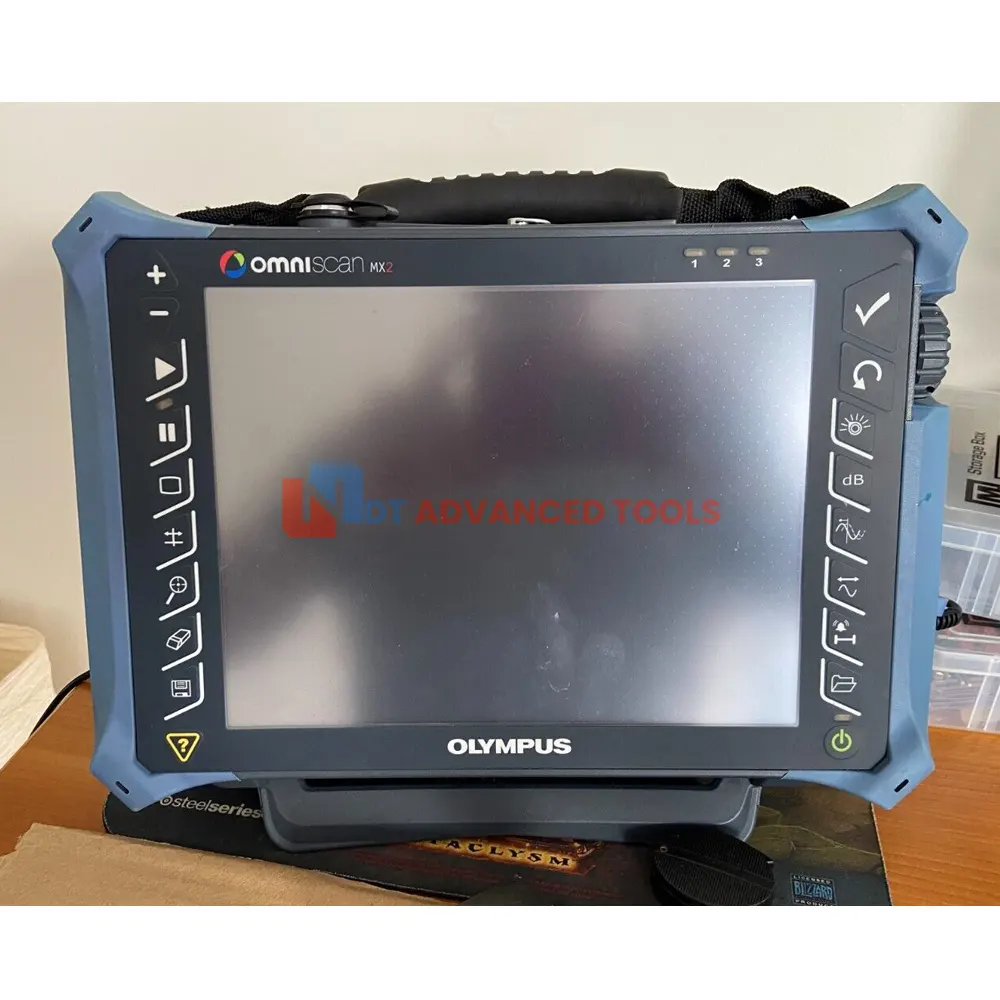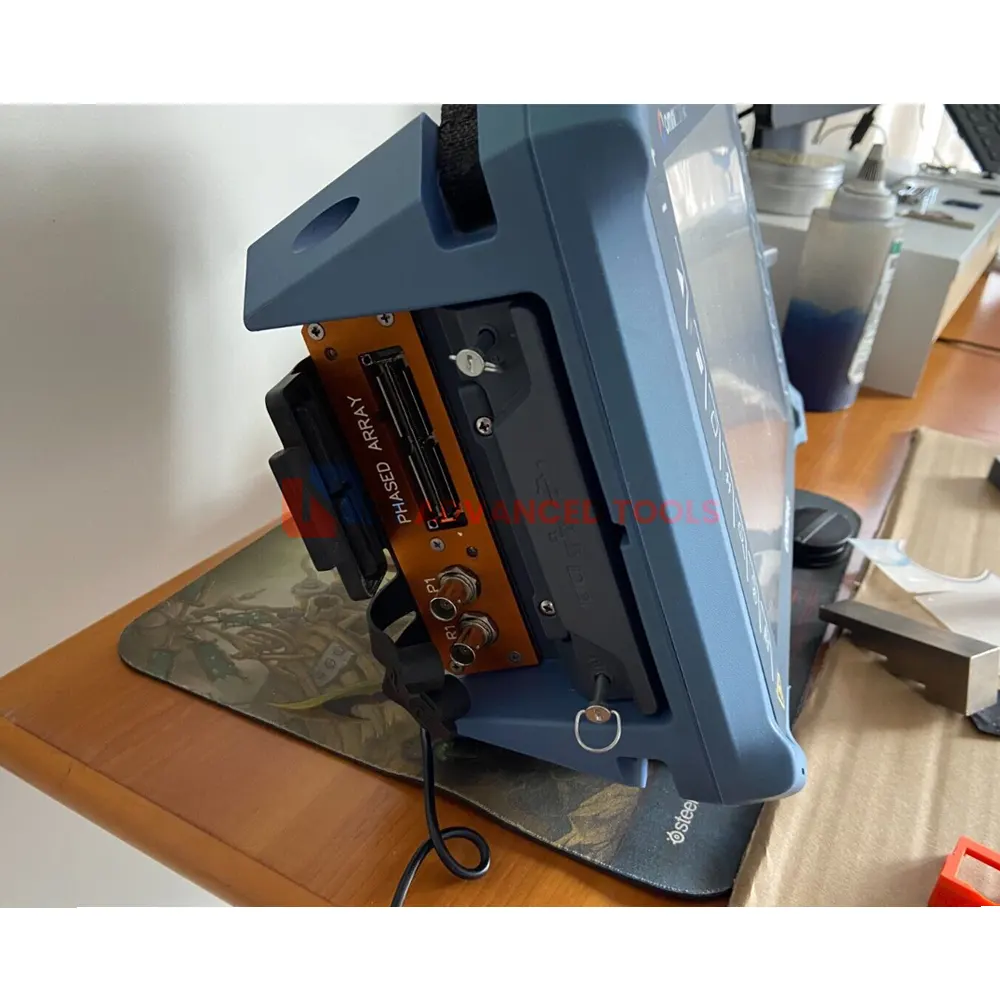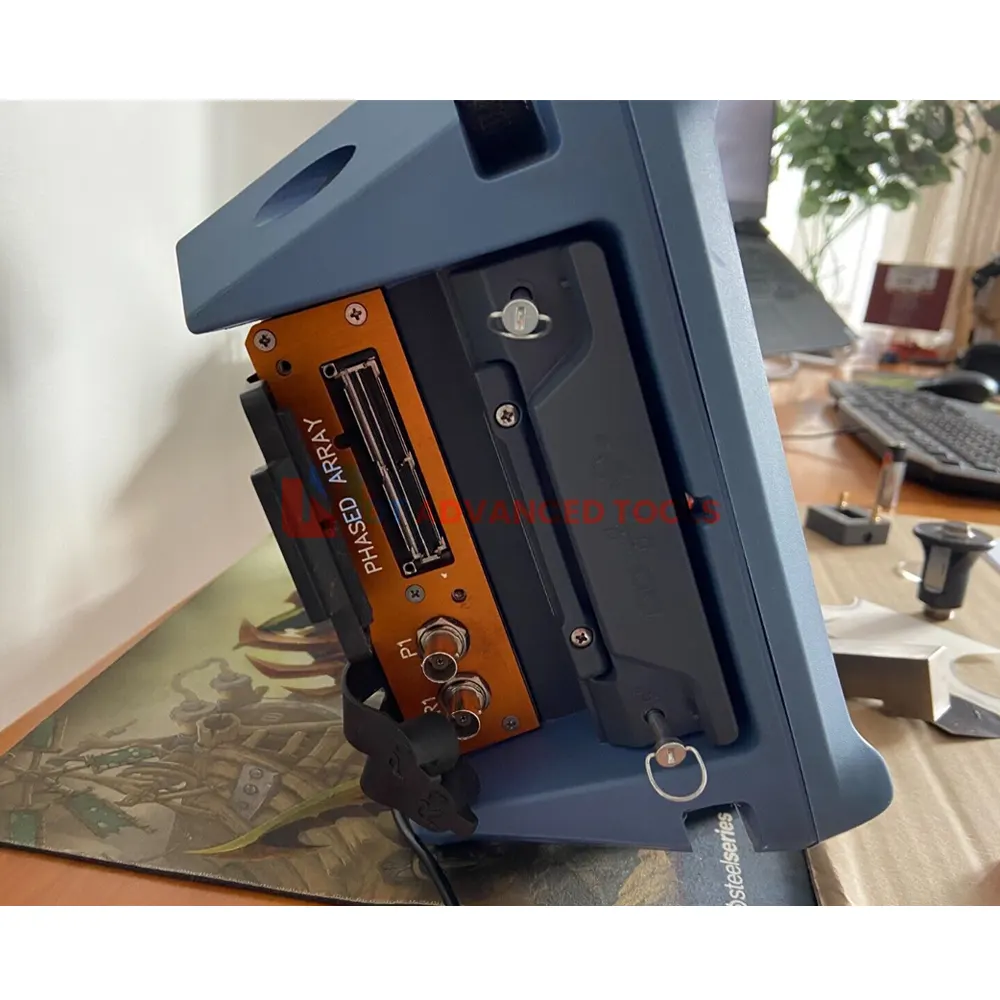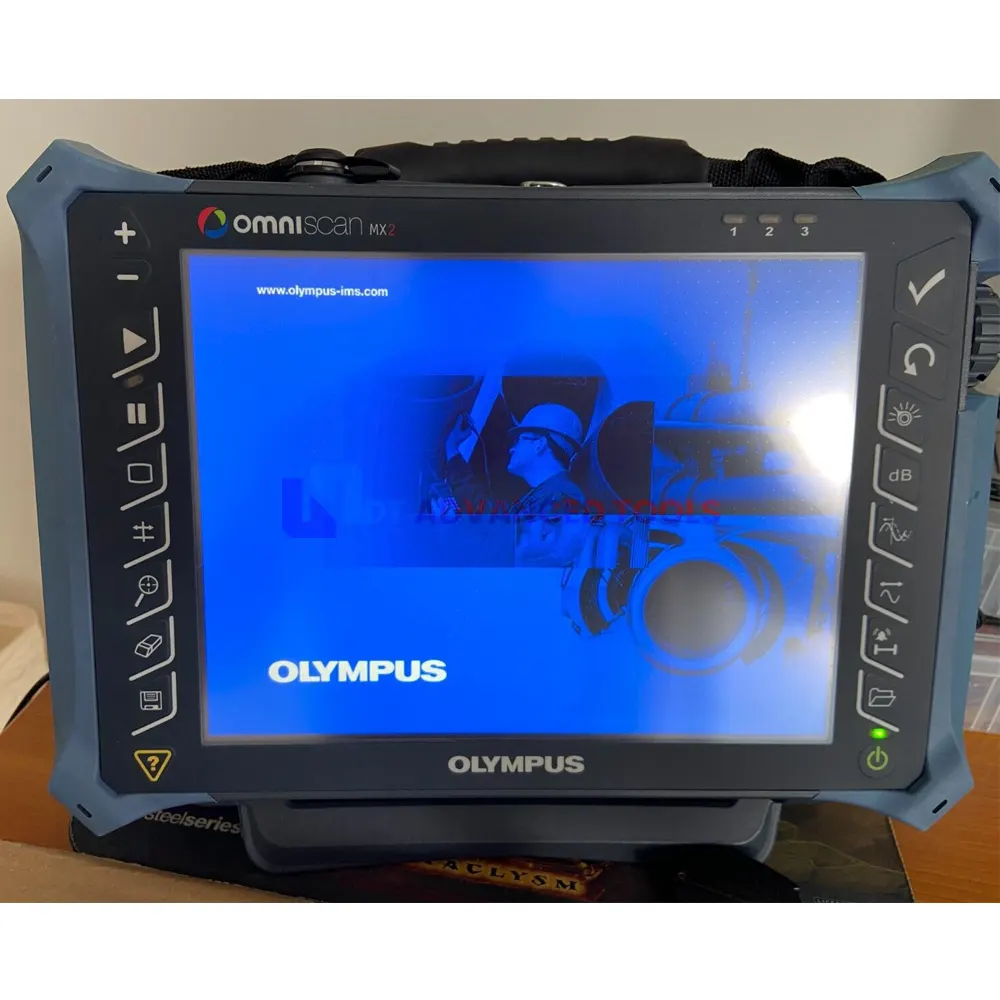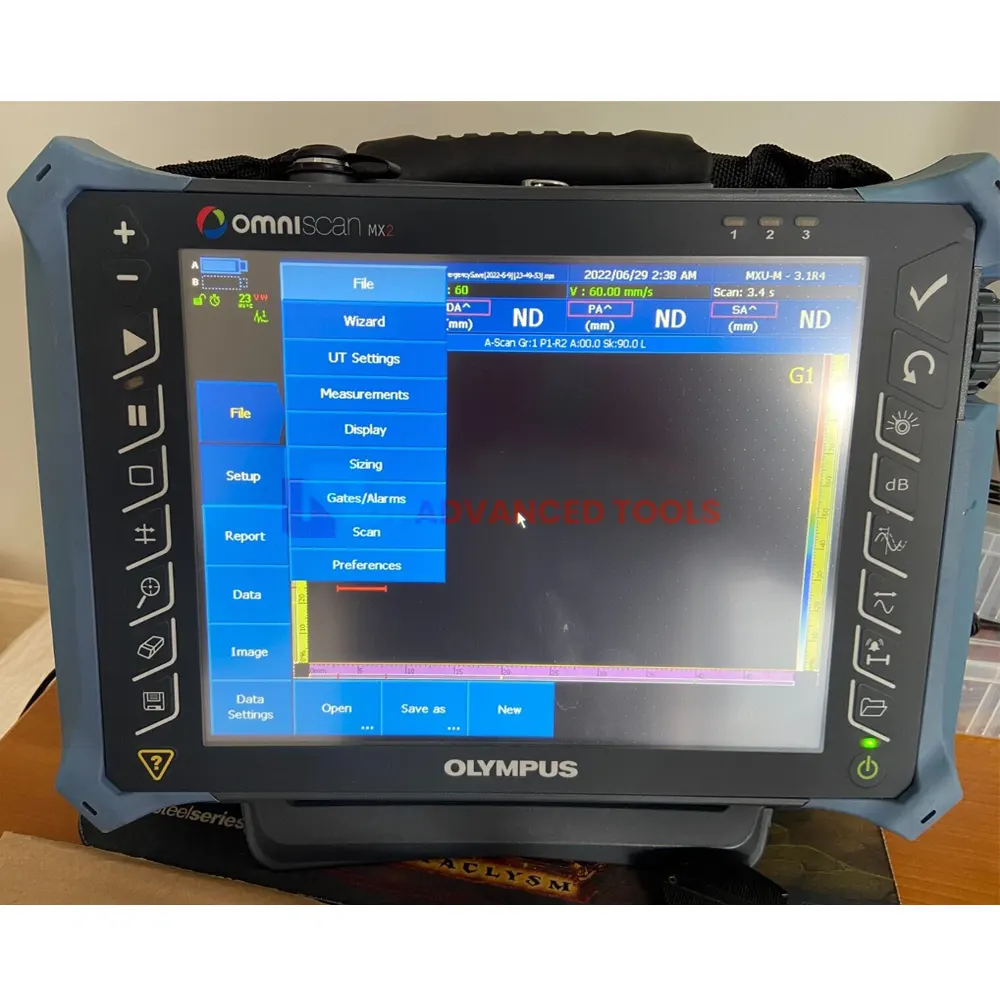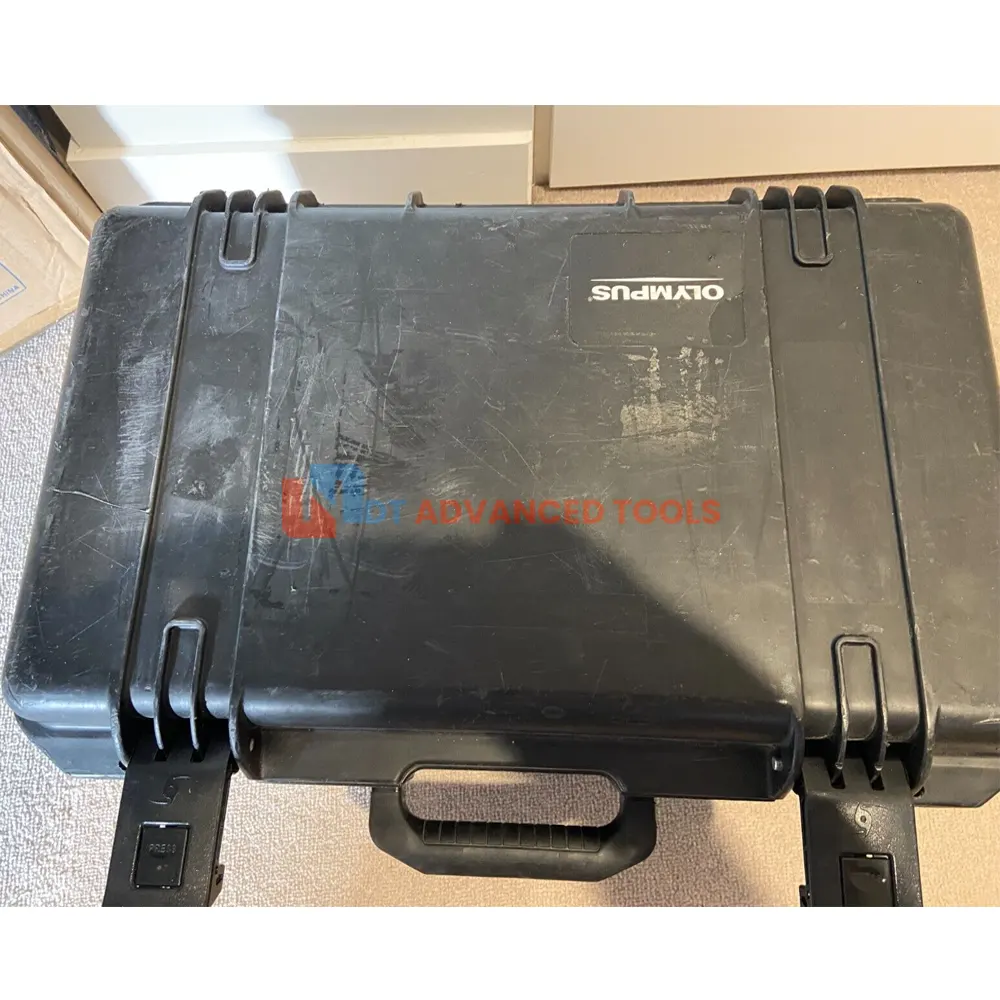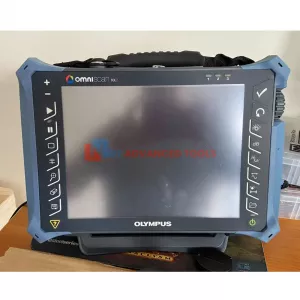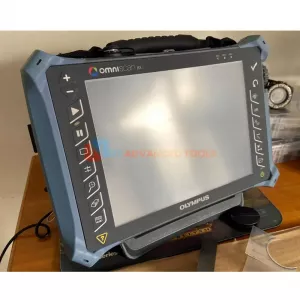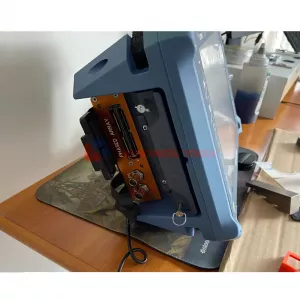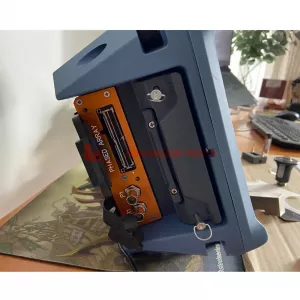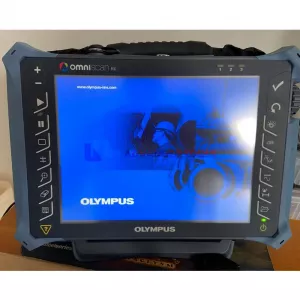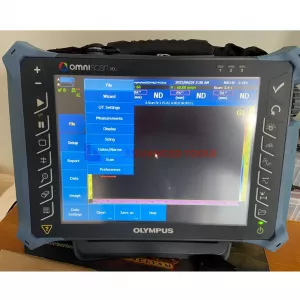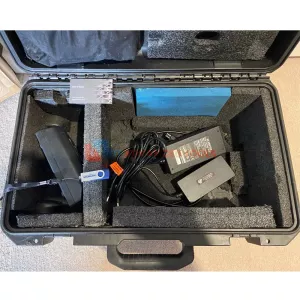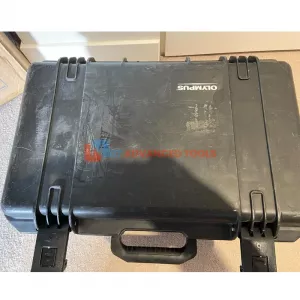Olympus Omniscan MX2 16:64 PA Flaw Detector
Olympus Omniscan MX2 16:64 PA Flaw Detector for sale, very clean instrument, everything is in excellent and great ready to working order condition
Condition: UsedOlympus Omniscan MX2 16:64 PA Flaw Detector, very clean instrument, everything is in excellent and great ready to working order condition.
Included with Sale:
- Omniscan MX2 with 16:64 PA Flaw Detector
- Lithium Ion Battery
- Charger and AC Cable
- Hard Padded Transport Case
Olympus OmniScan MX2, the Standard in Phased Array, Redefined
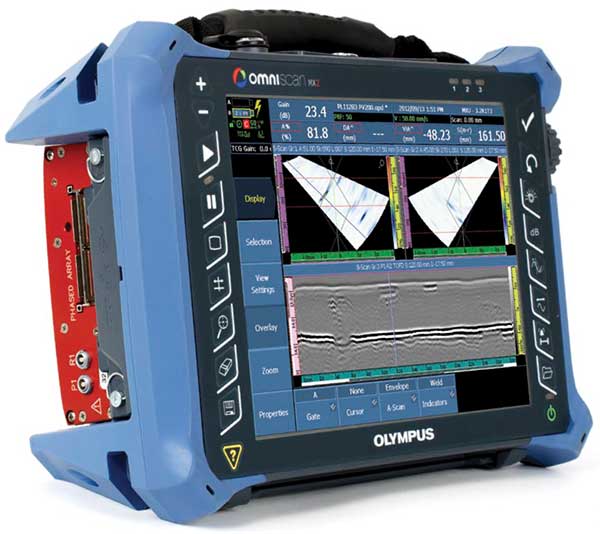
The result of over 10 years of proven leadership in modular NDT test platforms, the OmniScan MX has been the most successful portable and modular phased array test instrument produced by Olympus to date, with thousands of units in use throughout the world.
Building on a Solid Basis
This second generation OmniScan MX2 increases testing efficiency, ensuring superior, advanced AUT application performance with faster setups, test cycles, and reporting, in addition to universal compatibility with several phased array and ultrasound modules. Designed for NDT experts, this high-end, scalable platform delivers true next-generation NDT performance. The OmniScan MX2 offers a high acquisition rate and new powerful software features for efficient manual and automated inspection performance—all in a portable, modular instrument.
Faster Is Better!
Powerstart your day with the OmniScan MX2. The OmniScan MX2 simplifies and speeds up the setup process with its intuitive step-by-step Wizard, so you can start testing quickly. Featuring the industry-standard phased array user interface with faster-than-ever performance, a bigger and brighter 10.4 in. (26.4 cm) screen, new and unique intuitive touch-screen capabilities, and faster data transfer, the MX2 enables you to get to your next inspection quicker.
OmniScan MX2 Equals Flexibility
Thanks to NDT SetupBuilder and OmniPC companion software, the OmniScan MX2 can be dedicated exclusively to calibration and acquisition tasks or, if preferred, can perform all the steps of an inspection, directly on its large, user-friendly touch screen.
- Setup
The most efficient way to create a setup is to perform the simulation in NDT SetupBuilder, and imported directly, via SD card or USB key, to the OmniScan. Then, only a few basic operations are required in the instrument, such as setting the gate and range, before acquisition can begin. It is also very easy to create a setup right in the OmniScan, thanks to the following features:- Automatic probe recognition.
- Intuitive wizards to guide the user through every step of the setup creation using the interactive help menu.
- Weld Overlay and RayTracing simulation.
- Group copy option for fast multiple-group configuration.
- Calibration
To achieve a code-compliant inspection, the Calibration Wizard ensures that every focal law in every group is the direct equivalent of a single-channel conventional flaw detector. The user is guided step-by-step through the required calibrations like: Velocity, Wedge Delay, Sensitivity, TCG, DAC, AWS, and encoder calibrations. Now, TOFD PCS calibration and lateral wave straightening can be performed automatically. - Acquisition
The OmniScan MX2 enables easy configuration of inspection parameters for either manual, one-line, or raster encoded scans. The acquisition is displayed in real time through different views and offers the ability to store data on a hotswappable SD card or USB 2.0 device.- Intelligent layouts for configuring up to 8 groups.
- Full-screen mode for better visualization of defects.
- Synchronisation and measurements can be processed using different gate combinations.
- Data Analysis and Reporting
- Data, reference, and measurement cursors for defect sizing.
- Extensive readings database and predefined lists for trigonometry, flaw statistics on axes, volumetric position information, code-based acceptance criteria, corrosion mapping statistics, etc.
- Views are linked for interactive analysis and are automatically updated when performing off-line gate repositioning.
- Optimized preconfigured layouts for quick and simple length, depth, and height sizing of flaws.
- Pressure Vessel Weld Inspection
A complete inspection of pressure vessel welds can be performed in a single scan using an OmniScan PA and manual scanner such as the HSMT series or a motorized scanner like the WeldROVER. By combining
TOFD and PA in a single inspection pass, a significant reduction in inspection time can be achieved as compared with conventional raster scanning or radiography. Furthermore, inspection results are available immediately, enabling you to detect problems with welding equipment and fix them right away. - Weld Inspection of Small-Diameter Pipes
When coupled with the COBRA manual scanner, the OmniScan flaw detector is capable of inspecting pipes ranging from 0.84 in. OD to 4.5 in. OD. With its very slim design, this manual scanner is able to inspect
pipes in areas with limited access. Adjacent obstructions such as piping, supports, and structures can be as close as 12 mm (0.5 in.). - Manual and Semiautomated Corrosion Mapping
The OmniScan PA system with the HydroFORM scanner is designed to offer the best inspection solution for detecting wall-thickness reductions resulting from corrosion, abrasion, and erosion. In addition, this system detects mid-wall damage, such as hydrogen-induced blistering and manufacturing-induced delamination, and clearly differentiates such anomalies from loss-of-wall-thickness.For this application, phased array ultrasound technology offers superior inspection speed, data point density, and detection. - Composite Inspection
Parts made of laminate composite materials pose an inspection challenge due to their various shapes and thicknesses. Olympus offers complete solutions for the inspection of carbon-fiber-reinforced polymer
structures. These solutions are based on the OmniScan flaw detector, the GLIDER™ scanner, the RollerFORM™ phased array wheel probe, and dedicated probes and wedges designed for CFRP flat panel and radius inspection.

Features
- Bright, Large Touch Screen
- New Phased Array and TOFD Modules
- New NDT SetupBuilder Design Software
- New OmniPC Analysis Software
OmniScan MX2 Mainframe Specifications:
| Dimensions | 325 x 235 x 130 mm (12.8 x 9.3x 5.1 in.) |
| Weight | 3.2 kg (7 lb), no module and one battery |
| Data Storage | |
| Storage devices | SDHC card, most standard USB storage devices, or fast Ethernet |
| Data file size | 300 MB |
| I/O Ports | |
| USB ports | 3 |
| Audio alarm | Yes |
| Video output | Video out (SVGA) |
| Ethernet | 10/100 Mbps |
| I/O Lines | |
| Encoder | 2-axis encoder line (quadrature, up, down, or clock/direction) |
| Digital input | 4 digital TTL inputs, 5 V |
| Digital output | 4 digital TTL outputs, 5 V, 15 mA |
| Acquisition on/off switch | Remote acquisition enabled TTL, 5 V |
| Power output line | 5 V, 500 mA power output line (short-circuit protected) |
| Alarms | 3 TTL, 5 V, 15 mA |
| Analog output | 2 analog outputs (12 bits) ±5 V in 10 kΩ |
| Pace input | 5 V TTL pace input |
| Display | |
| Type | TFT LCD |
| Size | 26.4 cm (10.4 in.) (diagonal) |
| Resolution | 800 pixels x 600 pixels |
| Brightness | 700 cd/m2 |
| Number of colors | 16 million |
|
Power Supply |
|
| Battery type | Smart Li-ion battery |
| Number of batteries | 1 or 2 (battery chamber accommodates two hotswappable batteries) |
| Battery life | Minimum 7 hours with two batteries |
|
Environmental Specifications |
|
| Operating temperature range | -10 °C to 45 °C (14 ºF to 113 ºF) |
| Storage temperature range | –20 °C to 60 °C (–4 ºF to 140 ºF) with batteries –20 °C to 70 °C (–4 ºF to 158 ºF) without batteries |
| Ingress Protection Rating | Designed for IP66 |
| Shockproof rating | Drop-tested according to MIL-STD-810G 516.6 |
| MX2 Module Compatibility | |
| MXU 4.1R8 and later | OMNI-M2-PA32128PR |
| MXU 4.0 and later |
|
| MXU 3.1 and MXU 4.1R9 and later | OMNI-M-UT-8CH |
Phased Array Module Specifications (Applies to OMNI-M2 modules)
| Connectors |
|
||
| Number of focal laws | 256 | ||
| Probe recognition | Automatic probe recognition | ||
| Dimensions | 226 x 183 x 40 mm (8.9 x 7.2 x 1.6 in.) | ||
| Weight | 1.6 kg (3.5 lb) | ||
| Pulser/Receiver | |||
| Aperture | 32 elements | ||
| Number of elements | 128 elements | ||
| Pulser |
|
||
| Voltage |
|
||
| Pulse width |
|
||
| Pulse shape |
|
||
| Output impedance |
|
||
| Receiver |
|
||
| Gain |
|
||
| Input impedance |
|
||
| System bandwidth |
|
||
| Beamforming | |||
| Scan type | Sectorial and linear | ||
| Group quantity | Up to 8 | ||
| Data Acquisition | |||
| Digitizing frequency | 100 MHz | ||
| Maximum pulsing rate | Up to 10 kHz (C-scan | ||
| Data Processing |
|
||
| Number of data points |
Up to 8,192 |
||
| Real-time averaging |
|
||
| Rectifier |
RF, full wave, half wave +, half wave – |
||
| Filtering |
|
||
| Video filtering |
Smoothing (adjusted to probe frequency range) |
||
| Data Visualization | |||
| A-scan refresh rate | Real time: 60 Hz | ||
| Data Synchronization | |||
| On internal clock | 1 Hz to 10 kHz | ||
| On encoder | On 2 axes: from 1 to 65,536 steps | ||
|
Programmable Time-Corrected Gain (TCG) |
|||
| Number of points | 32: One TCG curve per focal law | ||
| Alarms | |||
| Number of alarms | 3 | ||
| Conditions | Any logical combination of gates | ||
| Alarm outputs | 2 | ||
